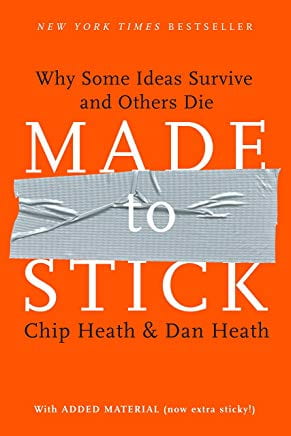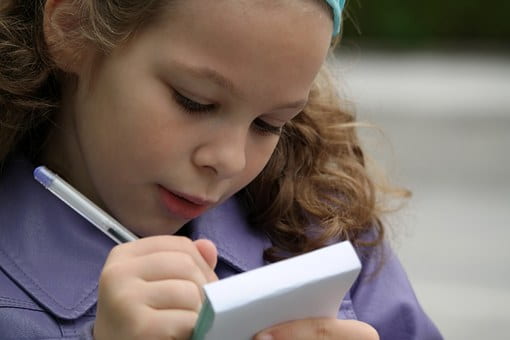Engaging Emotion & Imagination for SUCCES
(SUCCES; Heath & Heath, 2007)
About 16 years ago something happened that I will never forget. It was near the end of the school year and in most of my classes I was playing an exhausting game of tug-of-war for my students’ attention. This class was different. That year I had shaped my Social Studies 9 course around the powerful stories, wonder-full events, and remarkable people of the 18thand 19thcenturies. I had provided my students with many open-ended, imaginative activities for learning and demonstrating understanding. Engagement in this class was high and I found it incredibly rewarding to teach.
On this particular day, my students were huddled in teams, and there was a palpable buzz in the room. I had just revealed the final assignment: a dramatic re-enactment of key events in the French Revolution. Soon after they began to strategize, a group of Grade 9 students approached me—clearly something was awry. “Madame,” one of the students began hesitatingly, “we don’t think we can do a skit about the French Revolution…” I was ready for any number of excuses but, instead, she asked: “Can we make it a musical?”
This experience sticks with me—but more importantly, I have learned that what I taught my students has stuck with them long after that course ended. I received the following message from one of my students just last year (15 years later) after she found me on social media:
Mrs. Gillian Judson!! I will always remember you pretending to be a soldier in the French Revolution, pacing back and forth in the front of the class with your imaginary rifle leaned up against your shoulder!! And all of the other amazing (and hilarious) illustrations you used to bring history to life! Loved your classes sooo much!
Some emails you keep; this is one of those emails.
Teaching as Storytelling and Sticky Ideas
 Egan (1997) describes effective teachers are story-tellers (Egan, 1997); they make their students feel an emotional connection with the subject matter. In the language of brothers Chip and Dan Heath (2007), effective educators shape their subject matter content into simple, unexpected, concrete, credible, emotional stories. This post interweaves two approaches to making knowledge unforgettable: the work of the Heath brothers and Kieran Egan’s Imaginative Education (IE) approach to teaching and learning.
Egan (1997) describes effective teachers are story-tellers (Egan, 1997); they make their students feel an emotional connection with the subject matter. In the language of brothers Chip and Dan Heath (2007), effective educators shape their subject matter content into simple, unexpected, concrete, credible, emotional stories. This post interweaves two approaches to making knowledge unforgettable: the work of the Heath brothers and Kieran Egan’s Imaginative Education (IE) approach to teaching and learning.
Made to Stick: Why some ideas take hold and others come unstuck (2007) is a book about the characteristics of ideas/knowledge that are unforgettable; they stick in our minds. Heath and Heath’s book is for anyone who wants (or needs) others to understand and remember their ideas including, for example, accountants working with clients, marketing agents, authors, human resources people sharing the latest organizational initiative, shift leaders, life (or any kind of) coaches, and, well, teachers.
Teachers want to make fractions STICK. They want to make the meaning of the infamous Mole in Chemistry STICK. That’s always what we aim for—and it is what IE is all about. As an educator of educators I am always seeking ways to explain Imaginative Education philosophy and practice to my students. Made to Stick resonates strongly with me. There is an undeniable synergy between the Heath brothers’ framework for making “sticky” ideas (and why to do so) and Imaginative Education. The principles Heath & Heath suggest for turning a forgettable idea into something unforgettable—the SUCCES model (simplicity, unexpectedness, concrete, credible, emotional, stories)—nicely introduces what cognitive tools are, what Imaginative Education is all about, and how educators can use IE to make student learning meaningful and memorable.
Achieve SUCCES with Cognitive Tools
For each of the principles below, click on the cognitive tools that can help you achieve it.
SIMPLE
Main idea: You need a core, emotional message—seek elegance and prioritize the story
Use these cognitive tools:
Identify the emotional meaning (aka: find the story)
UNEXPECTED
Main idea: Provide an emotional “jolt”; make the familiar look unfamiliar
Use these cognitive tools:
Ignite curiosity through a sense of mystery
Engage a sense of wonder or awe
Change the context for learning(aka: when the classroom becomes a courtroom, a different historical era or geographical area)
CONCRETE
Main idea: Make it relatable; Embed in emotional terms/experiences anyone can understand and feel
Use these cognitive tools:
Humanize—use human story and experience—someone’s hopes, fears and passions—to frame an idea
Evoke a vivid emotional mental image
CREDIBLE
Main idea: Make your idea trustworthy and believable
Use these cognitive tools:
Note: So many of the previous tools can work here—what matters is what you choose to convey your idea. Key: emotional example that engages the listener in envisioning the possible.
Make data accessible through metaphor/analogy
Create a visual representation
EMOTIONAL
Main idea: Evoking feelings and engage empathy; those who act, feel
Use these cognitive tools:
Well…all cognitive tools tie up emotion with the knowledge they are used with but…I recommend the greatest tools storytellers have—as seen by the great Myth stories:
Play with dramatic tensions (Abstract Binary Opposites)to evoke feeling
Make it rhyme, reveal the rhythm(On how the body gives us learning tools—including a sense of rhythm and pattern)
Evoke a vivid mental, emotional image
And also:
Revolt and idealism (Engage their inner rebel!)
STORIES
Main idea: Find a suitable story—scour the papers, listen/watch the news, talk to people!
OR–what Imaginative Education urges educators to do: Shape your content into a story-form/the narrative—think like a reporter…what’s the story on x topic or idea? Why should we care?
Identify a heroic quality in your story or some dramatic emotional tension.
(If you don’t, other great story-tellers will)
Note: ALL cognitive tools can be used to make knowledge more story-like.
A Challenge!
I don’t think educators (at any level) think enough about how to make the content they are teaching unforgettable. I hope the SUCCES model and the cognitive tools listed above (and more here in the Tips for Imaginative Educators Series on imaginED) indicate how to do so.
Heath & Heath (2007) have a disclaimer in their book:
“We’ll admit it up front: We won’t be able to show you how to get 12-year-olds to gossip about mitosis around the campfire” (p. 24).
As soon as I read this I knew I had to pose this challenge to the imaginative educators I know—how would you make teaching mitosis unforgettable?How would you use cognitive tools to do this?
Please share your ideas below—contact me through CIRCE if you would like to be part of future conversations about engaging imagination and emotion in teaching.
Learn more about Imaginative Education here and get involved with the Centre for Imagination in Research, Culture and Education if you want to connect with imagination advocates and imaginative educators around the world.
Sources
Heath, C. & Heath, D. (2007). Made to stick: Why some ideas take hold and others come unstuck. London: Penguin/Random House.
imaginED: education that inspires Tips For Imaginative Educators Series: www.educationthatinspires.ca
More on Imaginative Education and cognitive tools:
Egan, K. & Judson, G. (2015) Imagination and the engaged learner: Cognitive tools for the classroom. (New York: Teachers’ College Press)




A group of kids were at biology camp out at Testtube Lake. Sitting around the campfire the group leader suggested telling mitosis jokes. One girl asked, ” will you need my undivided attention?” Two twins cried out ” Oh. My. Gawd! Just because we are twins doesn’t mean we are the same!” The depressed twin exclaimed, “Ok, I am confused, just because we don’t have a father or a brother and our mother just suddenly split, do we always have to expand on our differences?” The Nucleus boy whined, “Why am I always the center of attention?” Nema Tode the dreamy kid, announced she has had the recurring microscope dream again. She wakes up feeling like she is being watched by one big eye! Billy starts shivering and trembling and suddenly there is two of him…
Ha ha! Nice job David
You know I am 100% on board with this connection. This school year I had about 10 students who don’t have access to emotions as easily as many of us do. I found myself hitting Imaginative Education hurdles that I hadn’t experienced before – these guys remember stuff, but don’t necessarily feel stuff. I settled on making sure that surprise/unexpectedness was part of the lesson but I think they ended up with a collection of surprising bits of information rather than generalizing successfully and making greater meaning. Any thoughts?
Hi Caitlyn! What cog tools did you use to surprise them? I am wondering how they demonstrated their understanding? P.s. Great to hear from you!
I am a big fan of Dramatic Whole Body Learning.. we would act it out!
The students would “become” the cell that divides:
a) Each student finds a partner
b) The partners “glue” themselves together (Everyone sings: “We are a parent cell!”)
c) Teacher provides 10 chromosomes (dots with double-sided tape) to each “cell”
d) Partners stick on 5 chromosomes each on themselves (10 in total) Everyone sings: “We have 10 chromosomes!”
e) Teacher provides another 5 chromosomes to each partner in a Ziploc bag (a “suitcase” because they are going to be leaving home!)
f) Teacher says “separate” and each 1/2 of the cell separates (Everyone says “Bye Mom!”)
g) As cell separates, partners open up their “suitcases” and stick on the other 5 chromosomes (so they now have 10 chromosomes in total)
h) Teacher asks – how many chromosomes did you have together as a parent cell? (10) How many chromosomes did you have when you separated? (5) How many chromosomes did you get as a going away present? (5); how many do you have now? (10)… so: Mitosis is cell division that results in two daughter cells each having the same number and kind of chromosomes as the parent nucleus once they separate!
I love it! Lots of cognitive tools engaged in this to maximize learning and engagement!